Advertisements
Advertisements
प्रश्न
Use the information given in the following figure to find :
(i) x
(ii) ∠B and ∠C
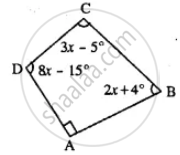
उत्तर
∵ ∠A = 90° (Given)
∠B = (2x + 4°)
∠C = (3x - 5°)
∠D = (8x - 15°)
∠A + ∠B + ∠C + ∠D = 360°
90° + (2x + 4°) + (3x - 5°) + (8x - 15°) = 360°
90° + 2x + 4° + 3x - 5° + 8x - 15° = 360°
⇒ 74° + 13x = 360°
⇒ 13x = 360° - 74°
⇒ 13x = 286°
⇒ `x = 286/13`
⇒ x = 22°
∵ ∠B = 2x 4 = 2 × 22° + 4 = 48°
∠C = 3x - 5 = 3 × 22° - 5 = 61°
Hence (i) 22° (ii) ∠B = 48°, ∠C = 61°
संबंधित प्रश्न
How many diagonals does following have?
A triangle
In a quadrilateral, define of the following Angles .
In a quadrilateral, define of the following Adjacent angles .
Complete of the following, so as to make a true statement:
A quadrilateral has ....... sides.
Complete of the following, so as to make a true statement:
The sum of the angles of a quiadrilateral is .... right angles.
Complete of the following, so as to make a true statement:
In a quadrilateral the point of intersection of the diagonals lies in .... of the quadrilateral.
In Fig. 16.19, ABCD is a quadrilateral.
How many pairs of adjacent sides are there?
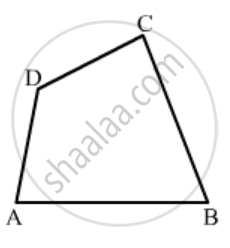
In Fig. 16.19, ABCD is a quadrilateral.
Name a pair of opposite angles.

In Fig. 16.21, the bisectors of ∠A and ∠B meet at a point P. If ∠C = 100° and ∠D = 50°, find the measure of ∠APB.

The measure of angles of a hexagon are x°, (x − 5)°, (x − 5)°, (2x − 5)°, (2x − 5)°, (2x + 20)°. Find the value of x.
Determine the number of sides of a polygon whose exterior and interior angles are in the ratio 1 : 5.
Complete the following statement by means of one of those given in brackets against each:
If both pairs of opposite sides of a quadrilateral are equal, then it is necessarily a ...............
Complete the following statement by means of one of those given in brackets against each:
f consecutive sides of a parallelogram are equal, then it is necessarily a ..................
If ABCD is a rectangle with ∠BAC = 32°, find the measure of ∠DBC.
Two angles of a quadrilateral are 89° and 113°. If the other two angles are equal; find the equal angles.
Angles of a quadrilateral are (4x)°, 5(x+2)°, (7x – 20)° and 6(x+3)°. Find :
(i) the value of x.
(ii) each angle of the quadrilateral.
From the following figure find;
- x
- ∠ABC
- ∠ACD
Use the information given in the following figure to find the value of x.
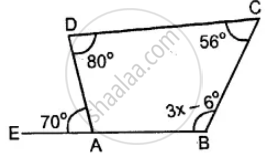
In a quadrilateral ABCD, AO and BO are bisectors of angle A and angle B respectively. Show that:
∠AOB = (∠C + ∠D)
Two adjacent angles of a parallelogram are 70° and 110° respectively. Find the other two angles of it.
If three angles of a quadrilateral are 90° each, show that the given quadrilateral is a rectangle.
Observe the figure below and find out their name.
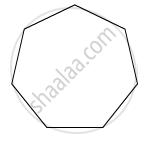
ABCDE is a pentagon in which AB is parallel to DC and ∠A : ∠E : ∠D = 1 : 2 : 3. Find angle A.
A diagonal of a rectangle is inclined to one side of the rectangle at 25º. The acute angle between the diagonals is ______.
In figure, if point A is shifted to point B along the ray PX such that PB = 2PA, then the measure of ∠BPY is ______.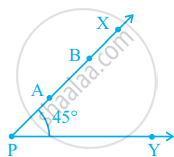
Number of angles less than 180° in figure is ______ and their names are ______.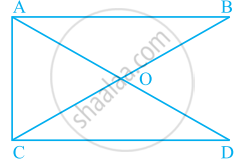
In given figure, name any four angles that appear to be acute angles.
Using the information given, name the right angles in part of figure:
BA ⊥BD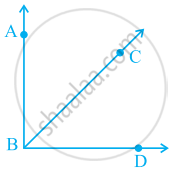
Can we have two obtuse angles whose sum is an acute angle? Why or why not?
